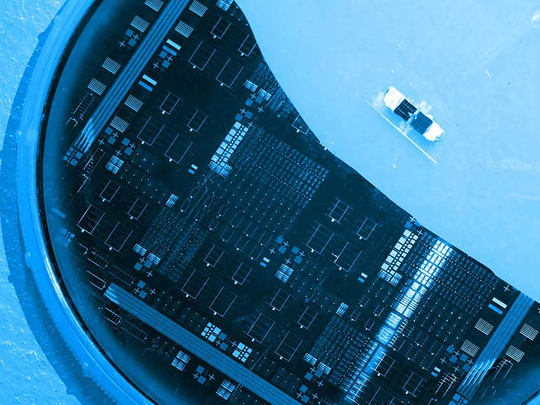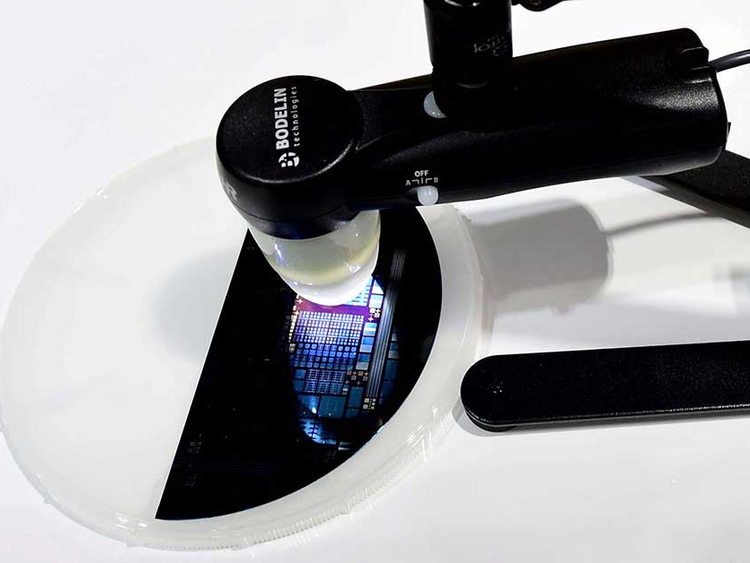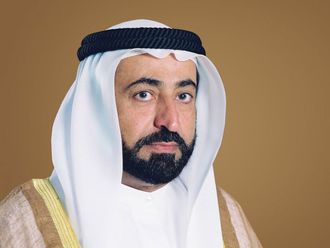
Dubai: A highly-efficient yet low-cost solar cell invented and designed in the UAE in collaboration with US engineers may soon revolutionise and even boost global solar power generation, proponents said.
A team of researchers from the Abu Dhabi-based Masdar Institute and the Massachusetts Institute of Technology (MIT) said they may have found a way to produce high-efficiency solar panels at a fraction of the cost of traditional photovoltaic (PV) panels in what they call the “step” solar cell.
The step solar cell combines two different layers of sunlight-absorbing material to harvest a broader range of the sun’s energy while using a new and cheaper manufacturing process. The institute exhibited the step-cell proof-of-concept device during the 18th Water, Energy, Technology, and Environment Exhibition (Wetex) last week.
“We are trying to solve two problems, getting high-efficiency cells but at a low cost. Our technology solves this problem,” Dr Ammar Nayfeh, Associate Professor of Electrical Engineering and Computer Science and a principal investigator of the step cell, told Gulf News.
Current silicon-based solar cells are relatively cheap to manufacture. But their efficiency in converting sunlight into electricity is poor at about 15 per cent to 20 per cent. To strive for high efficiency means increasing the cost because manufacturers use more expensive materials and expensive processes.
The team’s solution is to use silicon layered together with another semiconductor that could improve efficiency without compromising on costs significantly.
“We’ve solved the problem of growing new materials on silicon by a novel approach where we have a template called silicon germanium However, silicon germanium absorbs light intended for the bottom silicon cell, limiting efficiency of the tandem cell, To solve this problem, we invented what we call the ‘step cell’ that allows more of the solar light to hit the silicon solar cell, giving more design freedom for efficiency improvement. At the same time, the step cell design allows for a cheaper fabrication,” Dr Nayfeh said.
The innovative step cell is made by layering gallium arsenide phosphide, a semiconductor material that absorbs higher energy photons on a layer of silicon, forming a dual-junction cell. The two layers work together as a powerful solar cell that have theoretical efficiency over 40 per cent. It is expected that step-cell could ultimately achieve a power conversion efficiencies up to 35 per cent.
The idea of the step cell came from the doctoral dissertation of Bosnian student Sabina Abdul Hadi, who recently did her doctoral degree at Masdar Institute. Abdul Hadi worked under the supervision of Dr Nayfeh.
“By etching away the top layer and exposing some of the silicon layer, we were able to increase the efficiency considerably,” said Abdul Hadi, who continues to support the step cell’s technological development as a post-doctoral researcher at the institute.
Dr Eugene Fitzgerald, from the Merton C. Flemings — SMA Professor of Materials Science and Engineering at MIT, is also one of the principal investigators of the project. He contributed to the project by developing the gallium arsenide phosphide. Through his innovative process, he is able to grow the gallium arsenide phosphide layers on inexpensive silicon wafers that can be re-used, which reduces manufacturing cost.
Dr Nayfeh said they have made the laboratory-based proof-of-concept of the step-cell at the institute. They are in the process of getting a prototype to demonstrate the higher-efficiency, and developing a large-scale low-cost manufacturing process.
The team is currently seeking investments to make the technology commercially available through a start-up company. He hopes to produce solar cells for space agencies for their unmanned aerial vehicles and satellites, and the military in the future.
“There are companies who could manufacture high-efficiency, low-cost solar cells at $17 [Dh62.39] per watt. Our technology, theoretically, could see that price drop to maybe $3 per watt when produced on a large scale. There’s a huge cost reduction,” Dr Nayfeh said.
How it works
1. To make the innovative “step cell”, gallium arsenide phosphide, a semiconductor material that absorbs higher energy photons, is placed on a layer of silicon. This tandem solar cell could ultimately achieve a power efficiency of more than 35 per cent.
2. The step cell creates a literal “step” between the top gallium arsenide phosphide layer and the bottom silicon layer.
3. The silicon layer juts outwards, appearing like a bottom step. This intentional step design allows the top gallium arsenide phosphide layer to absorb the high energy photons (from blue, green and yellow light) while leaving the bottom silicon layer free to absorb not only the lower energy photons (from red light) but also the rest of the solar spectrum without any losses in the step part.
4. The unique design ensures that a greater share of the electromagnetic spectrum is absorbed, increasing the solar cell’s efficiency.













